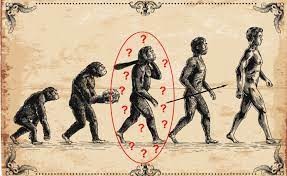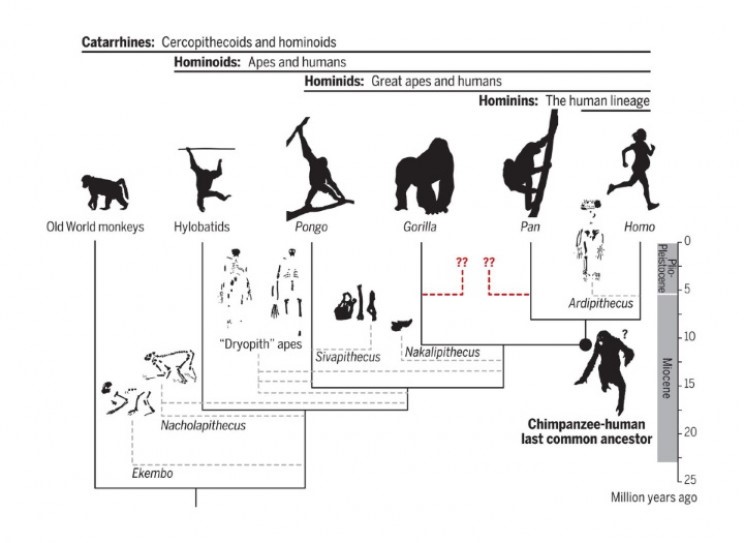No, Humans Didn’t Evolve From the Ancestors of Living Apes
- The last ancestor that we shared with apes had its own set of traits, and was different from both us and modern apes.
- The truth is that we don’t know where we, homo sapiens, came from. In his 1871 work, In The Descent of Man, Charles Darwin speculated that humans originated in Africa, and that we evolved from an ancestor who was different from any currently living species.
- Now, a new study by an international group of paleoanthropologists, with a wide range of specialties, have backed up Darwin by concluding that it is likely that the last ancestor that we shared with apes had its own distinct set of traits that are different from those of both modern humans and modern apes.
Who was this ancient ancestor?
- Chimpanzees, with whom we share 98 percent of our DNA, are in genus Pan, while humans are in genus Homo. Humans diverged from chimpanzees between 9.3 and 6.5 million years ago.
- Historically, two major approaches have been used in analyzing human ancestry:
- Top-down – uses living apes, especially chimpanzees, to reconstruct our origins
- Bottom-up – uses the fossil record of both humans and apes; it shows multiple possibilities both for what the LCA looked like, and where he roamed.
- In reviewing the studies surrounding these diverging approaches, the authors of the paper argue that there are limitations to relying on just one or the other of these opposing approaches. This is because the top-down studies often assume that modern ape species share habitat and features of earlier groups, while bottom-up studies tend to give individual fossil apes a more important evolutionary role than may be warranted.
- In an attempt to reconcile these approaches to identifying our ancient ancestor, the scientists looked at what the environment must have been like for the Pan-Homo last common ancestor, or LCA.
- The Miocene epoch existed from around 23 to 5.3 million years ago, and a number of fossil ape genera from that era have been found. However, they show a combination of features common to both “orthograde” (upright) and “pronograde” (walking on all fours) body plan, which has led some scientists to exclude the Miocene apes from the human lineage, and there is no scientific consensus on the evolutionary role played by these fossil apes.
- Some scientists espouse the theory that some Miocene apes dispersed out of Africa and into Eurasia, approximately 16 to 14 million years ago, before the hominins diverged from apes. Some of these apes gave rise to the line that produced orangutans, and the European “Dryopith” apes, while others returned to Africa where they evolved into modern African apes and hominins. Others interpret dryopiths as broadly ancestral to hominids or as an evolutionary dead end.
- During the late Miocene period in Africa, increased habitat fragmentation may have led to the evolution of African ape knuckle-walking, and hominin bipedalism, or walking on two feet, from a common orthograde ancestor who lived in the trees. Walking on two feet might have allowed our human ancestors to adapt their diets and locomotion, and escape the “specialization trap” that kept other apes in an arboreal environment The study concluded that future research efforts should focus on looking for Miocene ape fossils in areas where they have yet to be found. The scientists also concluded that data-driven modeling should take precedence over trying to fit evolutionary scenarios to every fossil find.
- Hominin fossils have been found in eastern and central Africa, and possibly also in Europe. Fossils of over 50 genera of ancient apes have been found in Africa and Eurasia, however, as Dr. Sergio Almécija, a researcher in the Division of Anthropology at the American Museum of Natural History told Sci-News “… there is no scientific consensus on the evolutionary role played by these fossil apes.”
- Kelsey Pugh, one of the study co-authors, added that, “The unique and sometimes unexpected features and combinations of features observed among fossil apes, which often differ from those of living apes, are necessary to untangle which features hominins inherited from our ape ancestors and which are unique to our lineage.


